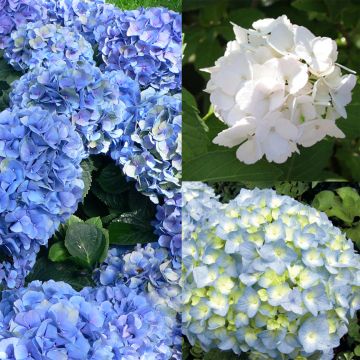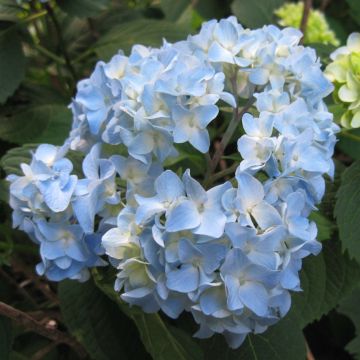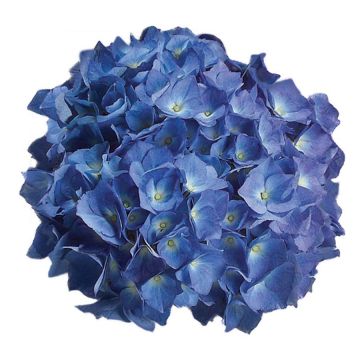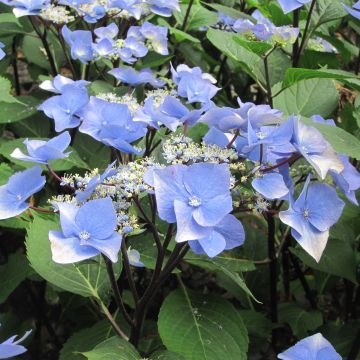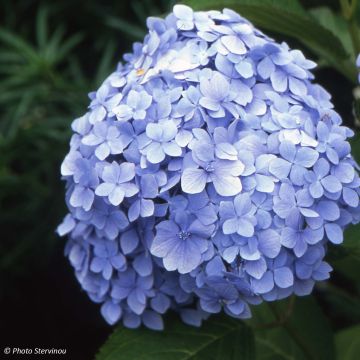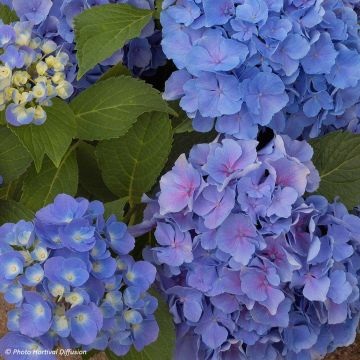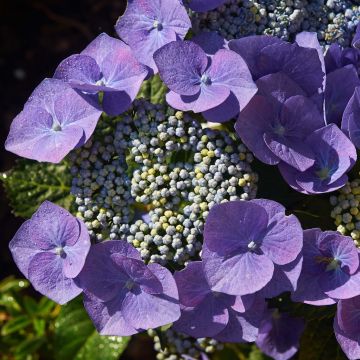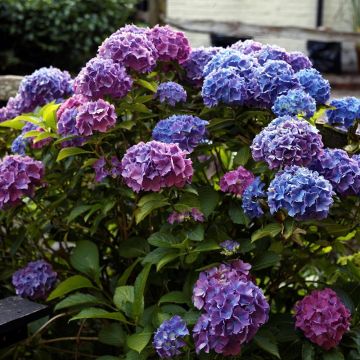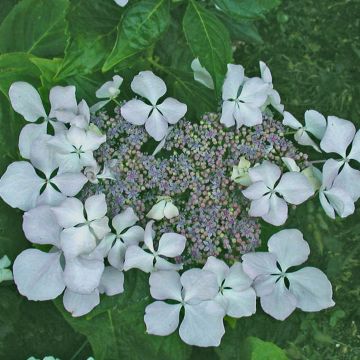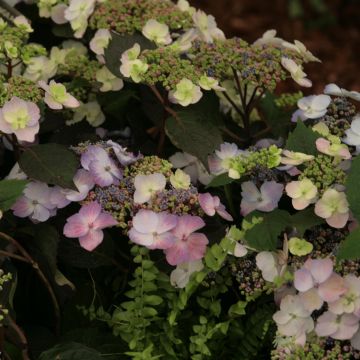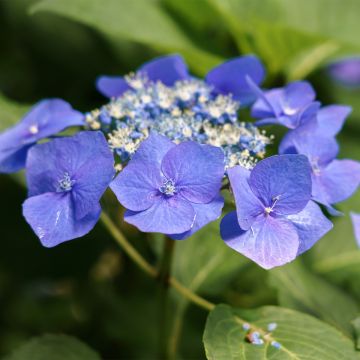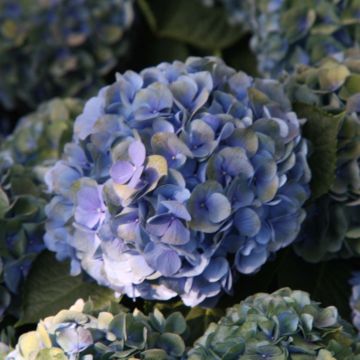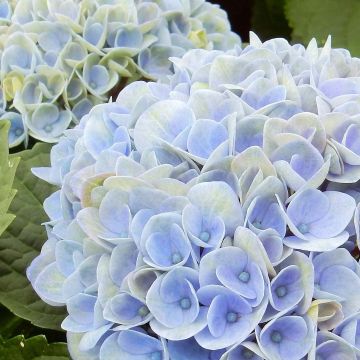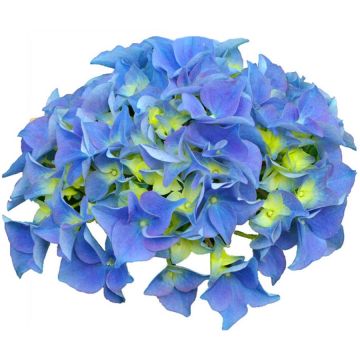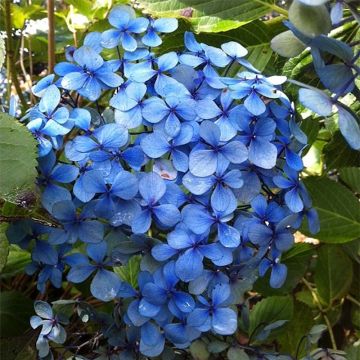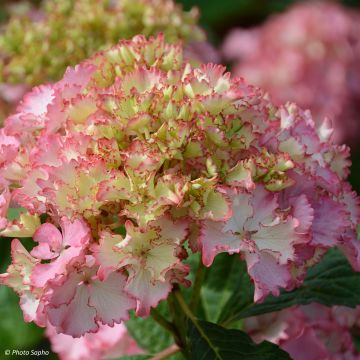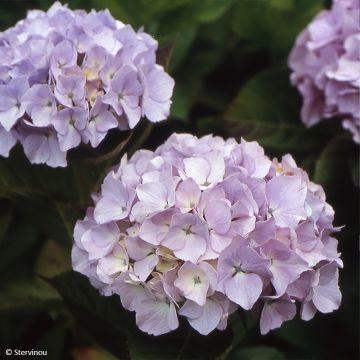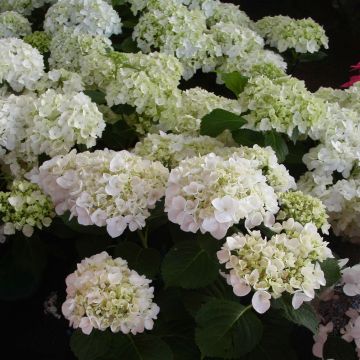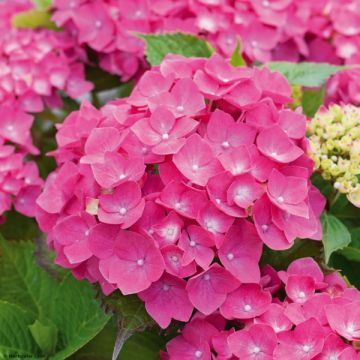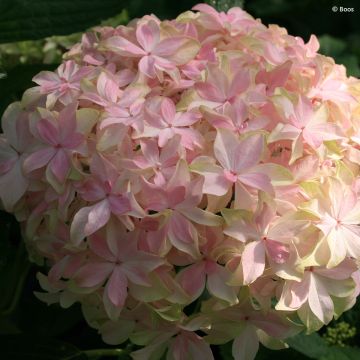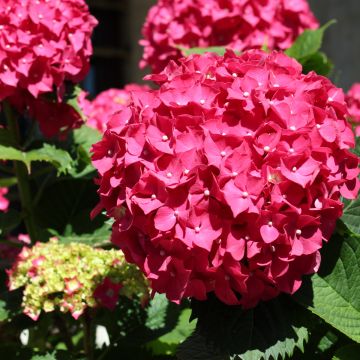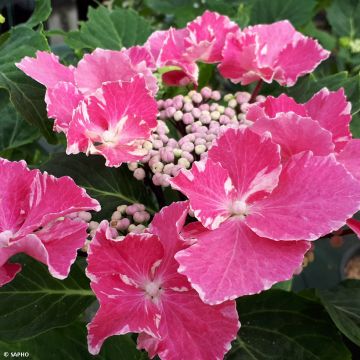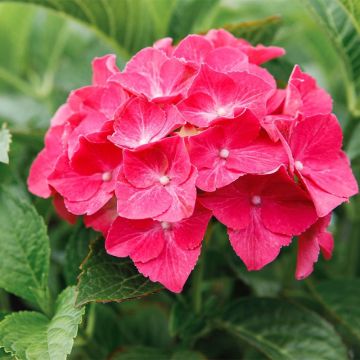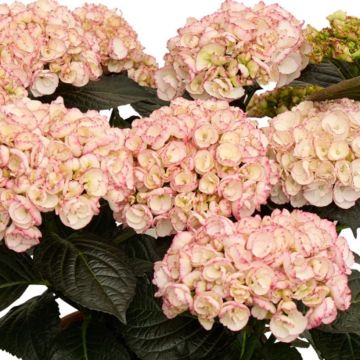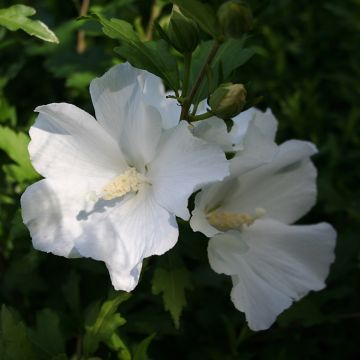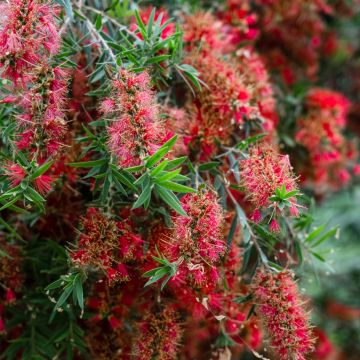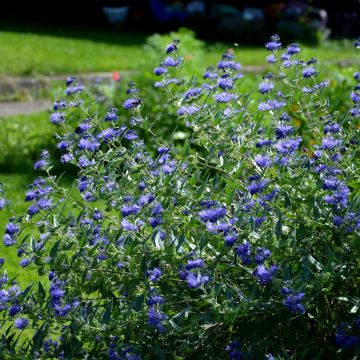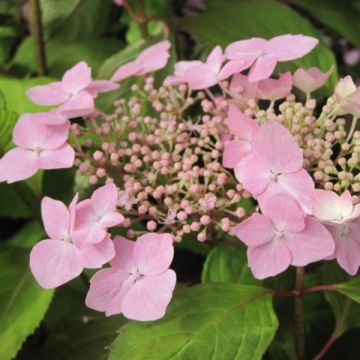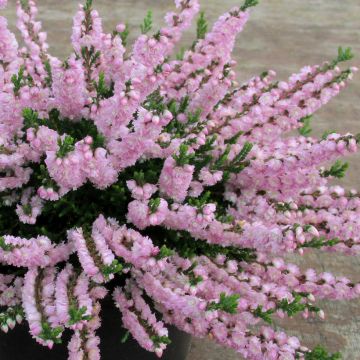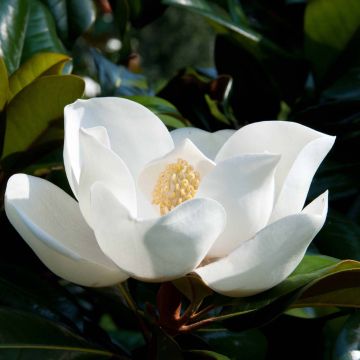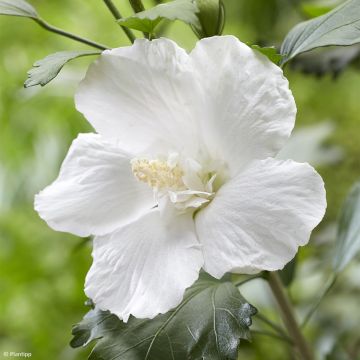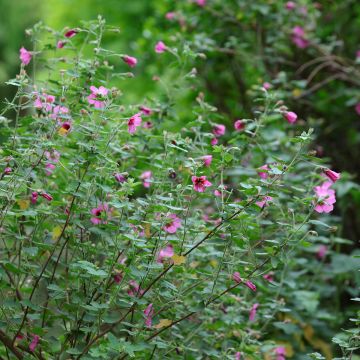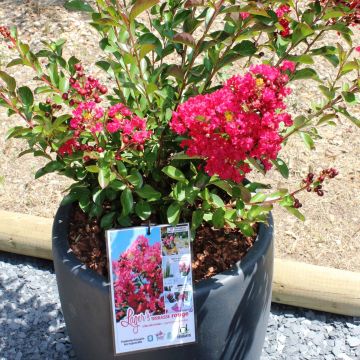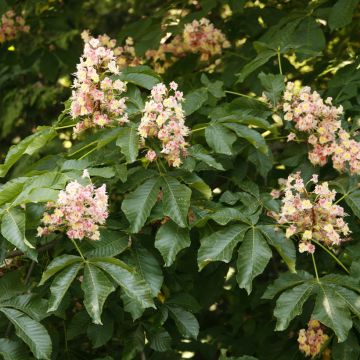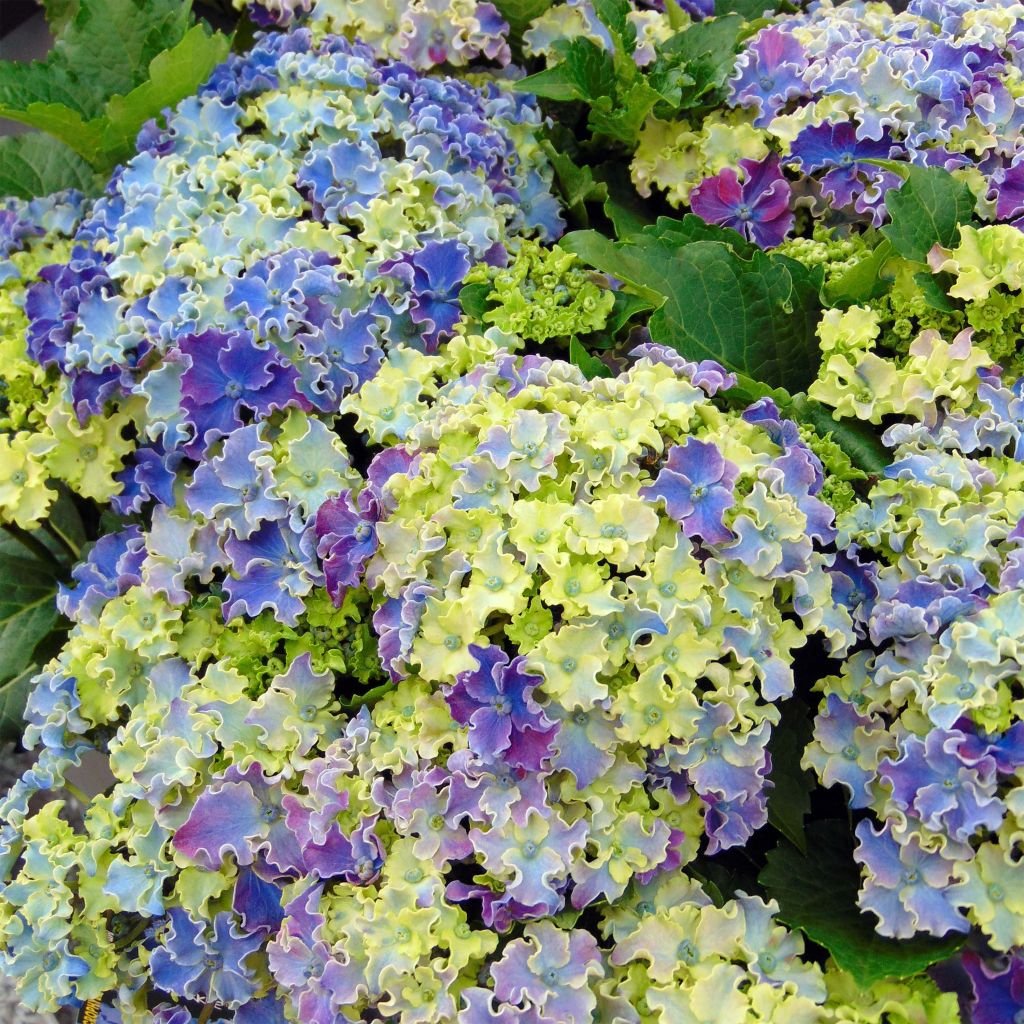

Hortensia - Hydrangea macrophylla Curly Sparkle Blue
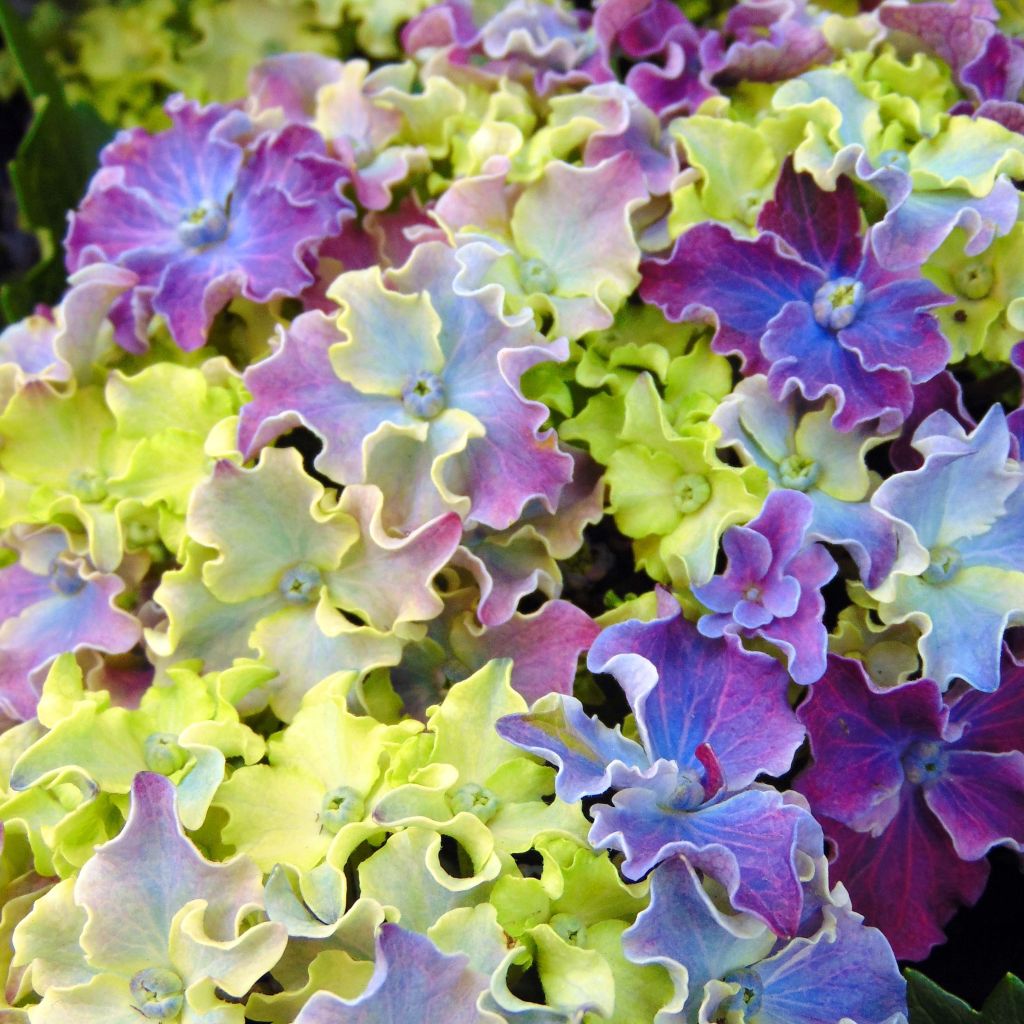

Hortensia - Hydrangea macrophylla Curly Sparkle Blue
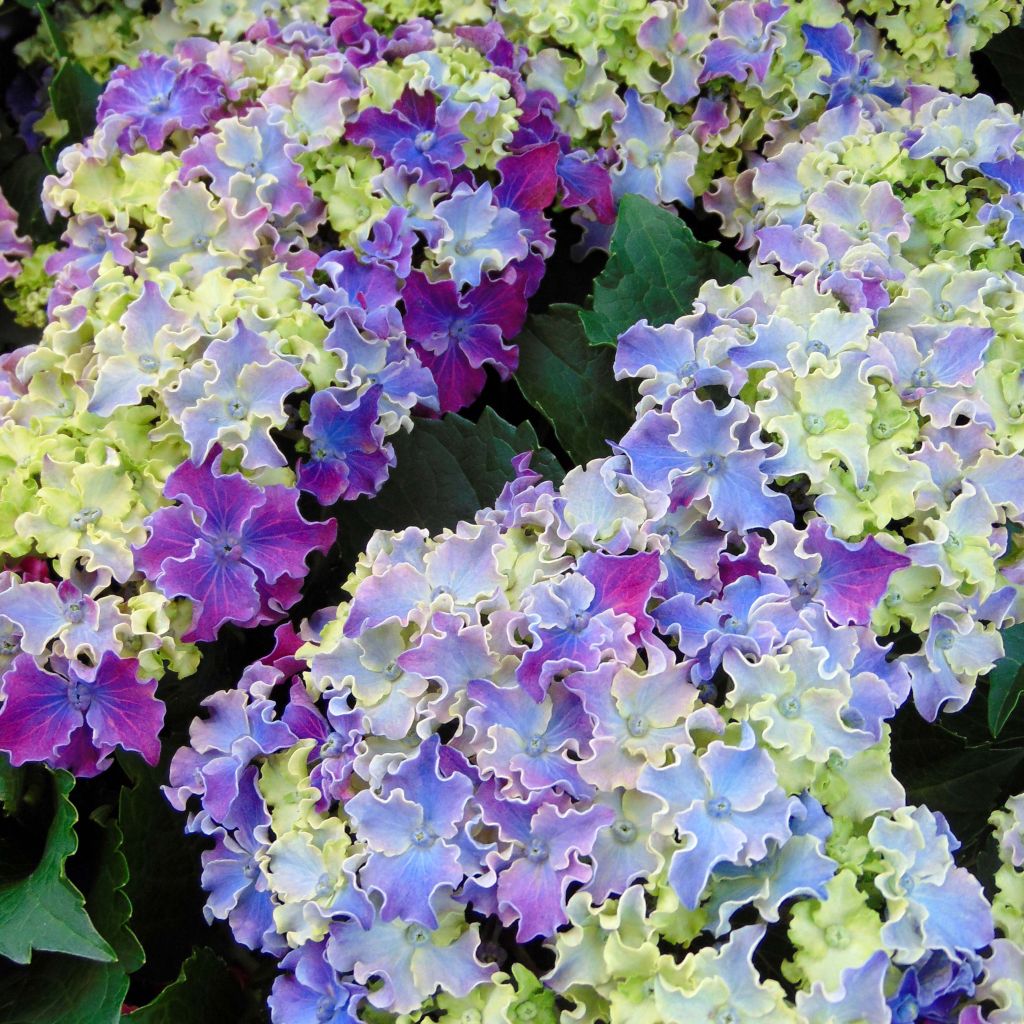

Hortensia - Hydrangea macrophylla Curly Sparkle Blue
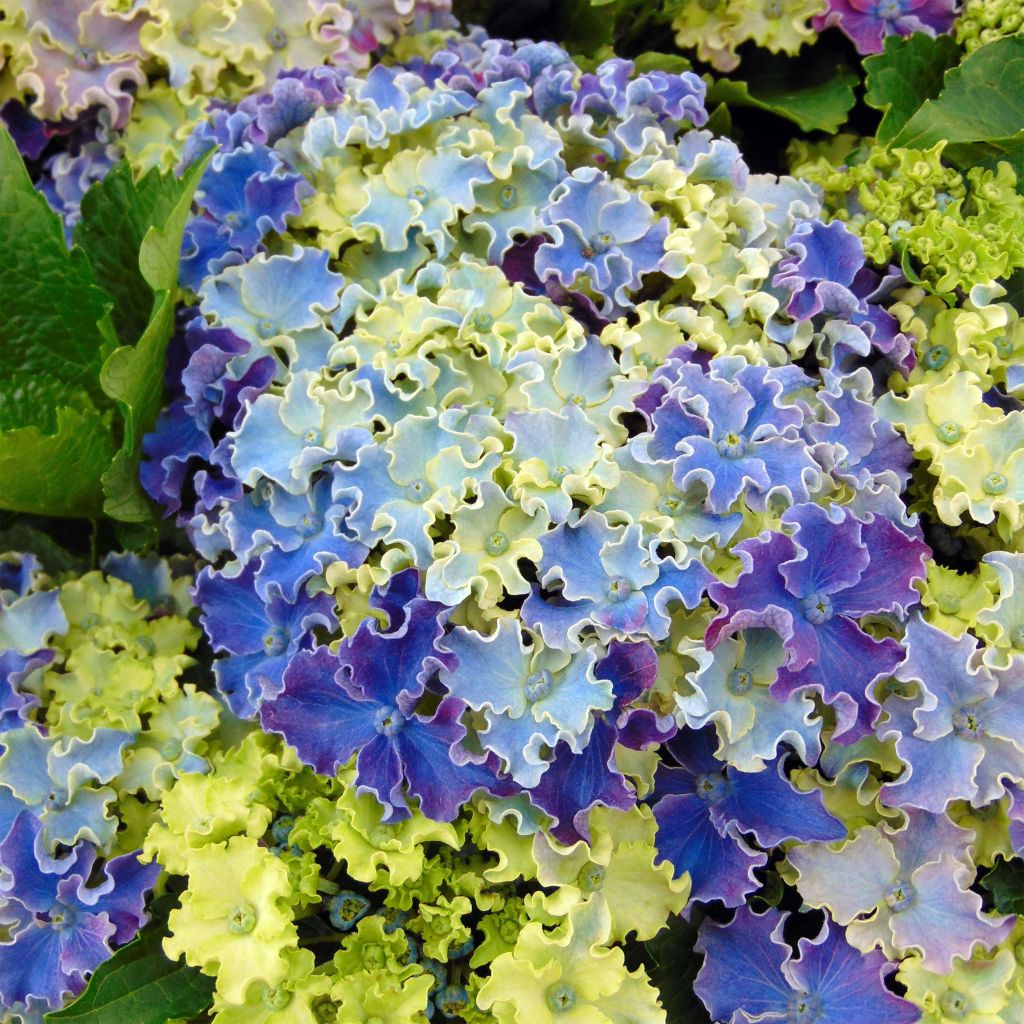

Hortensia - Hydrangea macrophylla Curly Sparkle Blue
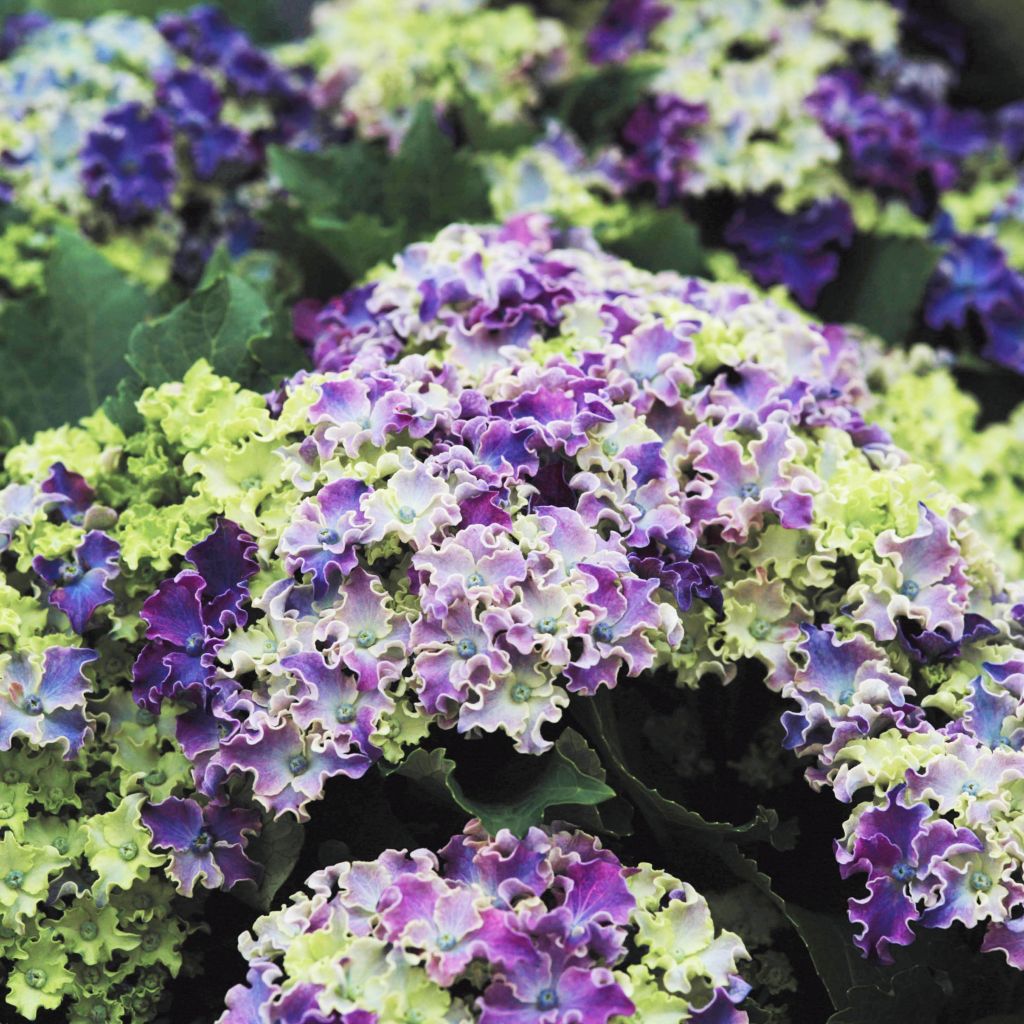

Hortensia - Hydrangea macrophylla Curly Sparkle Blue
Hydrangea macrophylla Curly Sparkle Blue
Hydrangea macrophylla Curly Sparkle Blue
Bigleaf Hydrangea, French Hydrangea
I was looking for a variety that stands out from the other young plants already present in my garden, and I was captivated by its large, frilly pompoms. During the unpacking of the package, the neck is small (about 3cm (1in) tall) but vigorous with numerous and well-swollen buds. I planted it in partial shade with a slate mulch, just like my other blue hydrangeas, plus a thin layer of well-aerated straw to protect against the last cold winds of winter. I can't wait to see the first flowers appear.
Stephane, 11/02/2022
Why not try an alternative variety in stock?
View all →This plant carries a 24 months recovery warranty
More information
We guarantee the quality of our plants for a full growing cycle, and will replace at our expense any plant that fails to recover under normal climatic and planting conditions.
From €5.90 for pickup delivery and €6.90 for home delivery
Express home delivery from €8.90.

Does this plant fit my garden?
Set up your Plantfit profile →
Description
Hydrangea macrophylla Curly Sparkle Blue 'H213901' is the "blue" flower version of the amazing Curly Sparkle variety. This beautiful novelty offers large, almost frizzy pompoms composed of rippled florets in shades of blue-purple turning lime green at the end of flowering. A bush like no other for flower beds or large pots on a terrace. Its dark foliage provides beauty in spring, but becomes magnificent from summer to autumn, when it is crowned with a unique and changing flowering.
Hydrangea macrophylla Curly Sparkle Blue is the result of cross-breeding between H. macrophylla and H. aspera, among others. All these hardy plants belong to the Hydrangeaceae family, native to China and Japan. '
Curly Sparkle Blue has a compact and rounded habit, well-branched and very regular. Its growth is fast and uniform, reaching about 90cm (36in) in all directions when mature. From July to September, its spherical inflorescences appear, resembling large pompoms. They are composed of numerous tightly packed sterile florets with strongly undulated petals, painted in different shades of blue, violet, ash-blue, and veins of white. Before fading, these florets become a tender green. The flowering spreads over ample and shiny, dark green, deciduous foliage. The leaves are opposite, reaching a minimum length of about 15cm (6in). They are simple, ovate to elliptical, with a tapered tip and regularly serrated like a saw. Hydrangeas can live for at least 50 years.
Curly Sparkle Blue is a blue variety with very rich colours, whose flowering will enliven the shaded areas of the garden or terrace. Its flowers are also perfect in bouquets. Hydrangeas are well known for brightening up the north side of houses. This one will thrive in a non-burning east or west exposure, in flower beds as well as hedges. This compact variety is particularly suitable for container cultivation, which can be placed on a terrace in a beautiful pot, or near an entrance. Although these plants are sensitive to limestone, they are not strictly speaking ericaceous plants. However, to reveal their blue colour, they do require an acidic soil or one rich in aluminium sulphate, a component that can be easily added regularly. Pair them with Magellan fuchsias, annual impatiens, hostas, or rodgersias, or plant spring-flowering bulbs in front of their round silhouette. Enjoy their sumptuous flowering in the garden or in the house for a long time.
Note: The colour of the flowers of macrophylla hydrangeas varies depending on the soil pH. Traditionally blue varieties turn pink in neutral or alkaline soil. To maintain a beautiful blue colour, mix ericaceous soil with your garden soil and apply aluminium sulphate (slate contains it) or alum stone every spring.
Report an error about the product description
Hydrangea macrophylla Curly Sparkle Blue in pictures
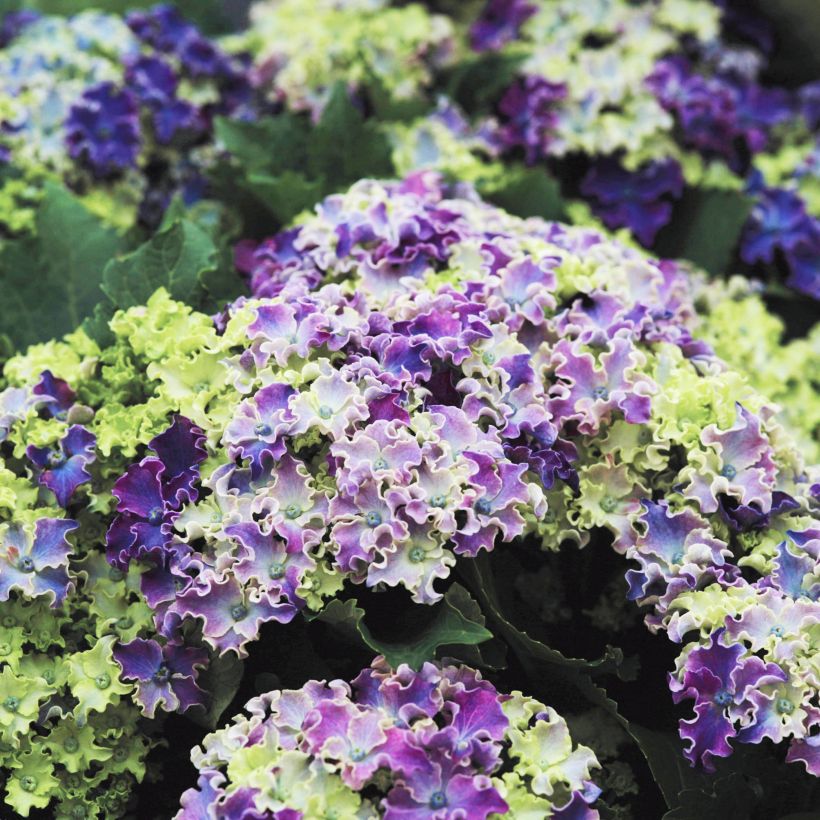

Plant habit
Flowering
Foliage
Botanical data
Hydrangea
macrophylla
Curly Sparkle Blue
Hydrangeaceae
Bigleaf Hydrangea, French Hydrangea
Cultivar or hybrid
Other Hydrangea Macrophylla
Planting and care
Plant in spring or early autumn, preferably in a slightly shaded position, for example against an east-facing wall or even north-facing. In very cold regions, it may be prudent to overwinter it in a cold greenhouse or conservatory. Protect it from cold, drying winds. It does not require acidic soil, but appreciates deep, moist but well-drained, fairly fertile soil, possibly enriched with a good base fertiliser before planting. If planting near a wall and the soil is dry at its base, place the root ball at least 30 to 40cm (12 to 16in) away from it and incorporate a quantity of well-decomposed compost to better retain moisture in the soil. Very hardy, it can be planted in cold regions without fear.
As for pruning, remove the faded flowers on the first bud or on the pair of buds directly below. When the plant is mature, prune the older stems back to the base by a quarter or a third. This will encourage the formation of young shoots. Carry out this pruning every year during March and April.
Planting period
Intended location
Care
-
, onOrder confirmed
Reply from on Promesse de fleurs
Summer-flowering shrubs
Haven't found what you were looking for?
Hardiness is the lowest winter temperature a plant can endure without suffering serious damage or even dying. However, hardiness is affected by location (a sheltered area, such as a patio), protection (winter cover) and soil type (hardiness is improved by well-drained soil).

Photo Sharing Terms & Conditions
In order to encourage gardeners to interact and share their experiences, Promesse de fleurs offers various media enabling content to be uploaded onto its Site - in particular via the ‘Photo sharing’ module.
The User agrees to refrain from:
- Posting any content that is illegal, prejudicial, insulting, racist, inciteful to hatred, revisionist, contrary to public decency, that infringes on privacy or on the privacy rights of third parties, in particular the publicity rights of persons and goods, intellectual property rights, or the right to privacy.
- Submitting content on behalf of a third party;
- Impersonate the identity of a third party and/or publish any personal information about a third party;
In general, the User undertakes to refrain from any unethical behaviour.
All Content (in particular text, comments, files, images, photos, videos, creative works, etc.), which may be subject to property or intellectual property rights, image or other private rights, shall remain the property of the User, subject to the limited rights granted by the terms of the licence granted by Promesse de fleurs as stated below. Users are at liberty to publish or not to publish such Content on the Site, notably via the ‘Photo Sharing’ facility, and accept that this Content shall be made public and freely accessible, notably on the Internet.
Users further acknowledge, undertake to have ,and guarantee that they hold all necessary rights and permissions to publish such material on the Site, in particular with regard to the legislation in force pertaining to any privacy, property, intellectual property, image, or contractual rights, or rights of any other nature. By publishing such Content on the Site, Users acknowledge accepting full liability as publishers of the Content within the meaning of the law, and grant Promesse de fleurs, free of charge, an inclusive, worldwide licence for the said Content for the entire duration of its publication, including all reproduction, representation, up/downloading, displaying, performing, transmission, and storage rights.
Users also grant permission for their name to be linked to the Content and accept that this link may not always be made available.
By engaging in posting material, Users consent to their Content becoming automatically accessible on the Internet, in particular on other sites and/or blogs and/or web pages of the Promesse de fleurs site, including in particular social pages and the Promesse de fleurs catalogue.
Users may secure the removal of entrusted content free of charge by issuing a simple request via our contact form.
The flowering period indicated on our website applies to countries and regions located in USDA zone 8 (France, the United Kingdom, Ireland, the Netherlands, etc.)
It will vary according to where you live:
- In zones 9 to 10 (Italy, Spain, Greece, etc.), flowering will occur about 2 to 4 weeks earlier.
- In zones 6 to 7 (Germany, Poland, Slovenia, and lower mountainous regions), flowering will be delayed by 2 to 3 weeks.
- In zone 5 (Central Europe, Scandinavia), blooming will be delayed by 3 to 5 weeks.
In temperate climates, pruning of spring-flowering shrubs (forsythia, spireas, etc.) should be done just after flowering.
Pruning of summer-flowering shrubs (Indian Lilac, Perovskia, etc.) can be done in winter or spring.
In cold regions as well as with frost-sensitive plants, avoid pruning too early when severe frosts may still occur.
The planting period indicated on our website applies to countries and regions located in USDA zone 8 (France, United Kingdom, Ireland, Netherlands).
It will vary according to where you live:
- In Mediterranean zones (Marseille, Madrid, Milan, etc.), autumn and winter are the best planting periods.
- In continental zones (Strasbourg, Munich, Vienna, etc.), delay planting by 2 to 3 weeks in spring and bring it forward by 2 to 4 weeks in autumn.
- In mountainous regions (the Alps, Pyrenees, Carpathians, etc.), it is best to plant in late spring (May-June) or late summer (August-September).
The harvesting period indicated on our website applies to countries and regions in USDA zone 8 (France, England, Ireland, the Netherlands).
In colder areas (Scandinavia, Poland, Austria...) fruit and vegetable harvests are likely to be delayed by 3-4 weeks.
In warmer areas (Italy, Spain, Greece, etc.), harvesting will probably take place earlier, depending on weather conditions.
The sowing periods indicated on our website apply to countries and regions within USDA Zone 8 (France, UK, Ireland, Netherlands).
In colder areas (Scandinavia, Poland, Austria...), delay any outdoor sowing by 3-4 weeks, or sow under glass.
In warmer climes (Italy, Spain, Greece, etc.), bring outdoor sowing forward by a few weeks.

































